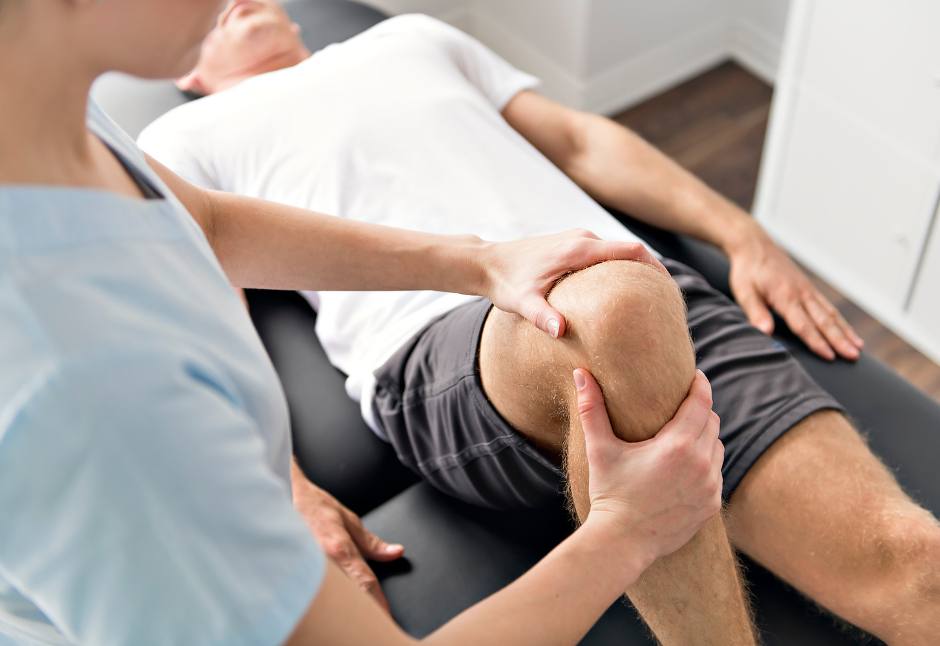
Recovering from pain, injury, or chronic conditions can be challenging and often needs more than one type of treatment. Physiotherapy is key for rebuilding movement and strength, but many people find better results when it’s paired with remedial massage.
While physiotherapy targets rehabilitation through exercises and clinical techniques, remedial massage focuses on easing tension, boosting circulation, and supporting soft tissue repair. Together, they create a more balanced approach that speeds recovery and reduces the risk of setbacks.
Keeping up with regular sessions, however, can be difficult when life is busy. Blys makes this easier by bringing qualified remedial massage therapists to your home, helping you stay consistent with care and get the most from your recovery plan.
Understanding Remedial Massage and Physiotherapy
Recovering well often means using different therapies that work together. Remedial massage and physiotherapy may look different in practice, but they share the same end goal: restoring movement and reducing pain.
- Remedial massage: A hands-on therapy that targets soft tissues such as muscles, tendons, and ligaments. Techniques like deep tissue work, trigger point release, and assisted stretching are used to:
- Relieve pain and tension
- Improve flexibility and joint mobility
- Support recovery from injury or chronic conditions
- Physiotherapy: An evidence-based clinical treatment guided by assessment and tailored plans. Physiotherapists use exercises, manual therapy, and education to:
- Restore movement and function
- Build long-term strength and stability
- Prevent re-injury through proper movement habits
Together, these approaches complement one another: physiotherapy addresses root causes, while remedial massage provides immediate relief and helps the body heal more effectively.
Why Combine the Two?
Physiotherapy provides structured rehabilitation, while remedial massage offers hands-on relief. When combined, they create a more effective recovery plan that tackles both short-term discomfort and long-term function.
- Pain relief: Massage reduces muscle tension and soreness, making physiotherapy exercises easier and less painful to perform.
- Improved circulation: Increased blood flow delivers nutrients and oxygen to injured tissues, which supports healing and reduces inflammation.
- Enhanced flexibility: Looser muscles are better prepared for stretching, strengthening, and mobility work prescribed by physiotherapists.
- Holistic care: Together, they provide a complete approach that addresses both the underlying causes of dysfunction and the immediate symptoms holding you back.
Research supports this combined approach. A systematic review found that massage therapy can reduce pain intensity and improve function for musculoskeletal conditions. When paired with physiotherapy, these benefits may lead to faster progress, fewer setbacks, and a more sustainable recovery.
This synergy means patients can move beyond simply treating pain, instead building resilience and confidence in their body’s ability to heal and stay active.
Benefits of Remedial Massage with Physiotherapy
Combining remedial massage with physiotherapy brings specific advantages depending on your health needs. Here are some key ways the two therapies work together.
Post-injury recovery
Injuries often cause stiffness and scar tissue that limit movement. Physiotherapy restores function through exercises and mobilisation, while remedial massage supports tissue repair by improving circulation and reducing adhesions. Together, they help you recover faster and regain mobility safely.
Chronic pain management
For people living with conditions such as lower back pain or neck tension, remedial massage can ease recurring tightness that makes physiotherapy exercises difficult. By reducing this barrier, massage allows patients to engage more effectively with strengthening and corrective movements prescribed by their physio.
Sports performance
Athletes frequently use both therapies to stay in peak condition. Massage reduces post-training muscle soreness, while physiotherapy corrects imbalances and prevents re-injury. This combination ensures faster recovery after intense sessions and supports long-term performance goals.
Stress and well-being
Pain and injury can take a toll on mental health. Massage encourages relaxation by lowering stress hormones and improving sleep, while physiotherapy builds confidence in the body’s ability to move without pain. Together, they provide both physical and emotional support throughout recovery.
Evidence and Expert Insights
Research and professional opinion both highlight the benefits of combining remedial massage with physiotherapy. Together, they create a more balanced approach to managing pain and supporting recovery.
- Clinical research: A Cochrane review found that massage therapy provides short-term relief for musculoskeletal pain, particularly when paired with other rehabilitation methods such as exercise.
- Physiotherapy guidelines: The Australian Physiotherapy Association notes that outcomes improve when treatment includes both hands-on therapy and structured exercise programs.
- Expert insights: Rehab specialists report that massage helps patients relax, lowers stress hormones, and reduces pain
- Brits context: Allied health clinics across the country are increasingly integrating massage therapists into their teams.
With services such as Blys offering mobile remedial massage at home, it’s now easier for Brits to access both professional physiotherapy and massage, ensuring recovery plans are consistent and tailored to individual needs.
Making Recovery Accessible with Blys
Even the best recovery plan can fall short if treatments aren’t consistent. Many people start strong with physiotherapy or massage but lose momentum because life gets in the way. Travel time, busy routines, and juggling multiple appointments often become barriers that slow down progress.
Common challenges include:
- Travel: long commutes to clinics can be exhausting, especially when you’re already in pain.
- Busy schedules: work, family, and personal commitments often push therapy sessions to the bottom of the list.
- Multiple appointments: fitting massage and physiotherapy into one week can feel overwhelming.
Blys helps remove these barriers by making care more accessible and stress-free:
- Mobile massage at home: professional therapists bring everything you need to your doorstep.
- Vetted, qualified practitioners: ensuring safe, effective, and tailored sessions every time.
- Nationwide availability: from major cities to regional areas, Blys is within reach.
By eliminating the hassle of travel and scheduling, Blys makes it easier to stick to your recovery plan and maximise the benefits of both physiotherapy and remedial massage.
Book a remedial massage with Blys today and complement your physiotherapy plan from the comfort of home.
Tips for Integrating Massage into Your Physio Plan
Physiotherapy and remedial massage each bring strong benefits on their own, but when used together, they can accelerate healing and make recovery feel less overwhelming. The key is knowing how to integrate both therapies in a way that supports your individual goals and treatment plan.
- Communicate with your physiotherapist: Always let your physio know if you’re adding remedial massage into your routine. They can guide your therapist on which areas to target and ensure massage complements the exercises or treatments you’re already receiving.
- Match frequency with recovery stages: Your needs will change over time. Early stages of recovery may require weekly massage to relieve pain and tension, while later stages might only need occasional sessions to maintain progress.
- Support prescribed exercises: Massage can make it easier to complete your physio program. Looser muscles and reduced stiffness mean stretches and strengthening routines feel more manageable.
- Track your progress: Record how you feel after each session. Noting improvements in pain, movement, or exercise performance will show how massage is supporting your physiotherapy plan.
When combined thoughtfully, massage and physiotherapy don’t just treat the issue at hand – they create a stronger foundation for long-term wellbeing. Taking an active role in managing both therapies ensures recovery feels more consistent and sustainable.
If you’re unsure whether physiotherapy is the right step for your recovery, check out our guide on how to decide if physiotherapy is right for you.
When to Seek Professional Guidance
Remedial massage can be an excellent tool for pain relief and recovery, but it’s not designed to replace professional medical care. For some injuries and conditions, massage alone may not be enough. Knowing when to seek expert guidance ensures your treatment is both safe and effective.
- Complex or recurring injuries: Issues like chronic back pain, recurring sprains, or sports-related injuries often need structured rehabilitation from a physiotherapist to prevent them from returning.
- Unexplained symptoms: Sudden numbness, sharp nerve pain, or weakness in a limb should be assessed by a GP or physiotherapist before massage therapy is considered.
- Post-surgical recovery: After surgery, physiotherapists create specific recovery protocols. Massage can be introduced later, but only with medical clearance.
Consulting a GP or physiotherapist first gives you a proper diagnosis and treatment plan. From there, remedial massage works best as a supportive therapy, easing discomfort and preparing your body for physiotherapy exercises.
By blending medical oversight with hands-on relief, you’re not just reducing pain you’re addressing the root cause. This integrated approach is what leads to stronger, safer, and longer-lasting results. If you’re ever unsure, it’s always best to seek professional advice before booking massage therapy.
Looking for ways to manage ongoing discomfort? Discover how regular remedial massage supports long-term pain relief.
A Stronger Path to Recovery
Recovering from pain, injury, or chronic discomfort takes more than a quick fix. It requires consistency, the right guidance, and therapies that work hand in hand. Physiotherapy provides the structure and rehabilitation strategies, while remedial massage offers the relief and support your body needs to heal more comfortably.
When used together, they create a faster, more effective pathway to recovery. It’s time to view remedial massage not as an occasional luxury, but as a valuable partner in your rehabilitation journey. By easing tension, improving circulation, and supporting physiotherapy exercises, massage can make every step of your recovery smoother and more sustainable.
Blys makes it simple to integrate massage into your routine, removing barriers like travel and scheduling so you can focus on getting better. With professional therapists who come to your home, recovery care has never been more convenient.
Ready to experience better recovery? Book your remedial massage with Blys and bring professional care straight to your door.





